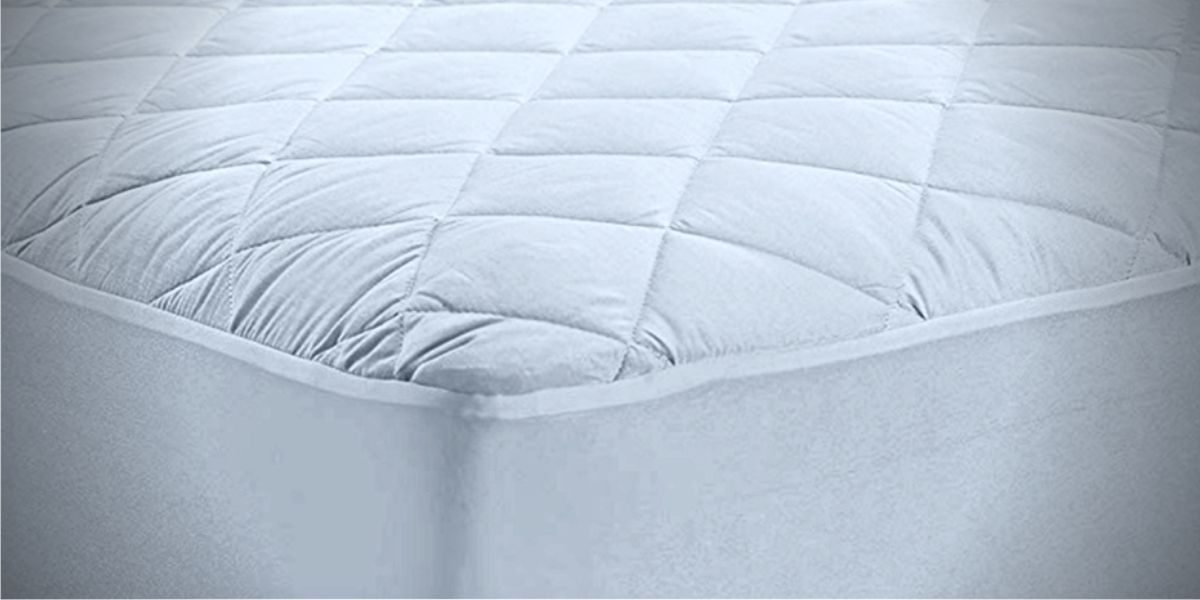Yes, most mattress protectors can be washed. Mattress protectors are designed to protect your mattress from spills, allergens, and dust mites. Washing them regularly helps maintain their effectiveness and keeps your sleeping environment clean.
Dos and don’ts of washing mattress protectors
Dos
- Do wash regularly: Wash your mattress protector every two to three months or more frequently if you suffer from allergies, to maintain a clean sleeping environment.
- Do use gentle detergent: Use a mild, bleach-free detergent to avoid damaging the protector’s materials and features.
- Do wash on a gentle cycle: Use a gentle cycle with cold or lukewarm water to protect the waterproof layer and prevent shrinkage.
- Do dry on low heat or air dry: Tumble dry on low heat or air dry your mattress protector to preserve its protective features.
- Do inspect for damage: Regularly check your mattress protector for any signs of wear or damage, and replace it if needed.
Don’ts
- Don’t use harsh chemicals or bleach: These can damage the waterproof layer or other protective features of your mattress protector.
- Don’t use fabric softeners: Fabric softeners can reduce the protector’s effectiveness and may cause damage to the materials.
- Don’t wash with hot water: Hot water can damage the waterproof layer or cause the protector to shrink.
- Don’t dry on high heat: High heat can damage the waterproof layer or cause shrinkage.
- Don’t iron or dry clean: Ironing or dry cleaning can damage the protective features of your mattress protector.
- Don’t ignore stains or odors: Address any spills, stains, or odors immediately to maintain a clean and healthy sleeping environment.
5-step guide to washing mattress protectors
Step 1
Check the care label: Before starting, read the care label on your mattress protector to ensure you follow the manufacturer’s recommendations for washing and drying. This will help you preserve the protector’s materials and features.
Step 2
Remove bedding and prepare for washing: Remove all bedding, including sheets and pillowcases, from your mattress protector. Check for any visible stains and treat them with a gentle stain remover, following the instructions on the product label.
Step 3
Load and wash: Place the mattress protector in your washing machine. Add a gentle, bleach-free detergent without fabric softeners to avoid damaging the protector’s materials. Set your washing machine to a gentle cycle with cold or lukewarm water, as hot water can damage the waterproof layer or cause shrinkage.
Step 4
Dry properly: After washing, transfer the mattress protector to your dryer, if the care label allows. Set the dryer to a low heat or air-dry setting to protect the waterproof layer and prevent shrinkage. Alternatively, you can air dry the protector by laying it flat or hanging it outdoors, away from direct sunlight.
Step 5
Inspect and reinstall: Once the mattress protector is completely dry, inspect it for any remaining stains or damage. If it’s clean and in good condition, place it back on your mattress and cover it with your freshly washed bedding.
FAQs
How often should I wash my mattress protector?
Wash your mattress protector every two to three months. However, if you suffer from allergies or have experienced a spill or accident on your bed, you may want to wash it more frequently to maintain a clean and healthy sleeping environment.
Can I use bleach or fabric softeners when washing my mattress protector?
It’s not recommended to use bleach or fabric softeners when washing your mattress protector. Bleach can damage the waterproof layer and other protective features, while fabric softeners can reduce the protector’s effectiveness and cause damage to the materials. Instead, use a gentle, bleach-free detergent to ensure the best care for your mattress protector.
Is it safe to wash and dry my mattress protector with other bedding items?
While it’s generally safe to wash your mattress protector with other bedding items, it’s important to follow the care label instructions and use the appropriate settings on your washing machine and dryer.
Ensure that you use a gentle cycle with cold or lukewarm water and avoid mixing the protector with items that require different care settings. When drying, use low heat or air-dry settings to prevent damage to the waterproof layer or shrinkage.
Final thoughts 💭
In summary, proper care and maintenance of your mattress protector are essential to preserve its protective features and ensure a clean sleeping environment. Always check the care label for manufacturer’s recommendations and wash the protector every two to three months, or more frequently if needed.
Use a gentle, bleach-free detergent and wash on a gentle cycle with cold or lukewarm water. Dry the protector on low heat or air dry, avoiding high heat, ironing, or dry cleaning. By following these guidelines and addressing any FAQs that arise, you can extend the life of your mattress protector and maintain a healthy sleep environment.





Leave a Reply